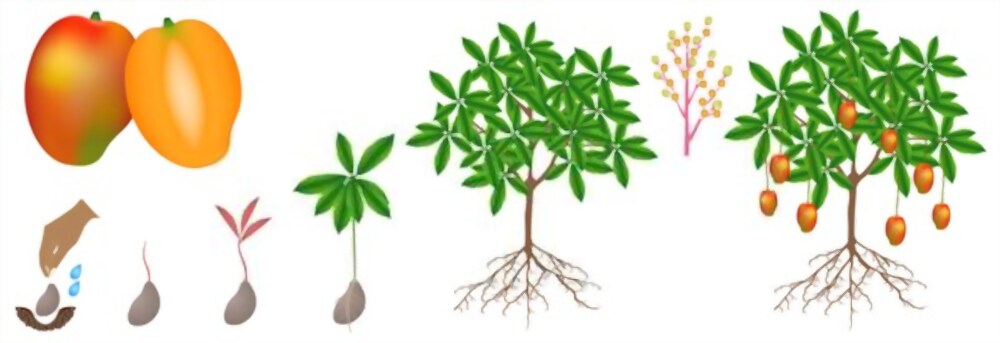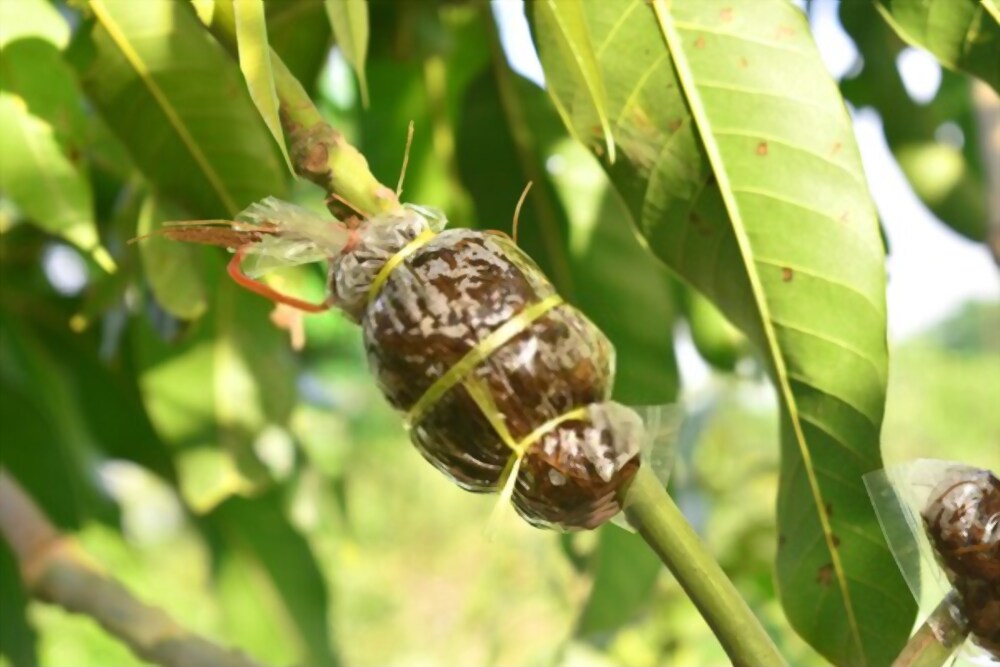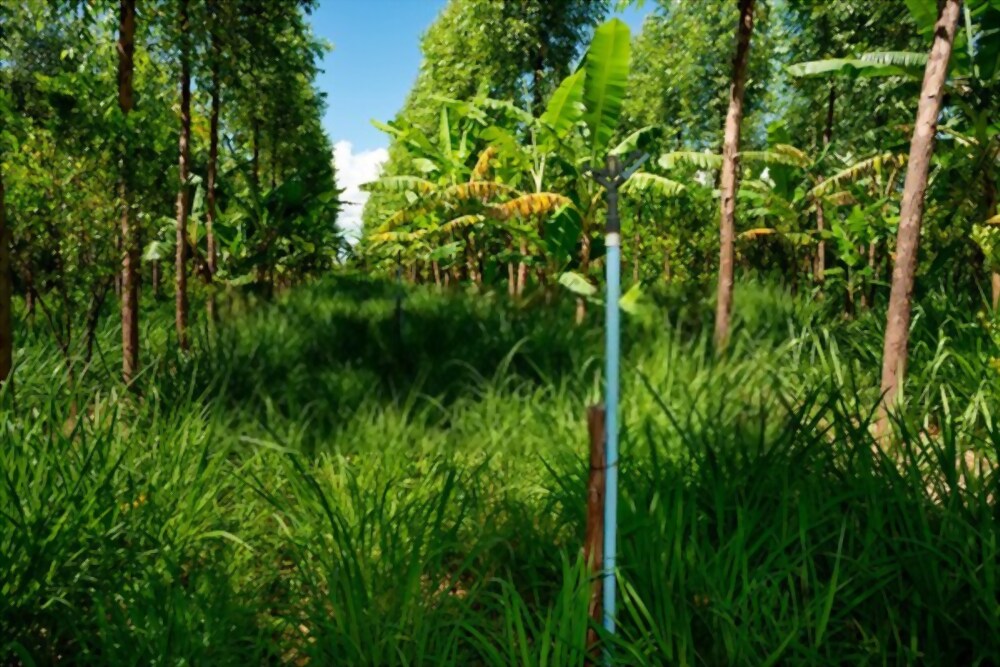Mango Cultivation Guide for More Production

It may look easy to you that you can grow and cultivate on a large or a small scale, but it isn’t. The reality is that it needs a lot of work and details that one should do and know before starting the cultivation of mango.
Every plant has its own growing procedure and habitat. Different plants require different types of nurturing to grow into trees. Today we will be discussing the care that should be given to mangoes for their development and growth.

Well, the growth of a plant depends on various external factors like temperature, climate, the type of soil, irrigation, and many more. In this article, we have discussed how and when mango is cultivated and some of India’s varieties. Let us look into it in detail.
Mango Cultivation Guide for More Production
What is mango cultivation? Or Where is it cultivated?
Cultivation, in short, and simple language, refers to the process of taking care of plants. And numerous factors can affect the cultivation of any fruit or vegetable. Some of the factors that usually or you can say mostly affect the cultivation of mangoes are:
- Climate
Mango grows well in areas 600m above the mean sea level and should be frost-free, and there shouldn’t be high humidity or rains during flowering.
- Temperature
The ideal temperature for cultivating mango is 24 degrees Celsius to 27 degrees Celsius. If the trees are getting regular irrigation, they can survive in temperatures up to 48 degrees Celsius.
- Soil
Mango can be grown in a wide range of soils. Deep and well-drained loam to sandy loam soils are the most suitable for cultivation. Heavy black cotton, saline, and alkaline soils should be avoided. The pH for mango cultivation is supposed to be between 5.5 to 7.5.
Well, this was a bit about the cultivation of mangoes, but now let’s see where it is cultivated.
Mangoes have been cultivated in South Asia for thousands of years and reached Southeast Asia between the fifth and fourth centuries. By the 10th century, the cultivation of mangoes had begun in East Africa.
Mangoes are now cultivated in most frost-free tropical and warmer subtropical climates. More than half of the world’s production of mangoes are cultivated in India.
Different Varieties
As you might know, there are numerous varieties of mangoes available for you to buy in the market, and each of them has one or the other special characteristics. There are almost 1000 varieties of mango in India; we have discussed some of the few varieties grown in different states:
- Bombay Green (Malda)
It is one of the earliest varieties of mangoes found in North India. They are harvested by the end of June. These fruits are medium-sized and have a strong and pleasant flavor. The pulp is deep yellow, firm, and does not have fiber.
- Dashehari
These are a midseason type of mangoes. This variety ripens in the first half of July and is most popular in North India. These mangoes are medium-sized with a pleasant flavor, sweet, and have a fibrous pulp. The keeping quality of this variety is good.
- Langra
These are a midseason type of mangoes as well. They ripen by the 2nd half of July. These fruits are large in size, the flesh is firm, and does not have fiber. They are lemon yellow in color and are strongly flavored. This variety of mangoes are among the essential varieties in North India with biennial bearing habits.
- Samar Bahisht Chausa
This is a late-maturing variety of mangoes found in North India. These mangoes ripen in the first fortnight of August. These fruits are large with light yellow color and have a soft and sweet pulp. It is a shy bearing.
Apart from these mangoes, there are many hybrid varieties of mangoes as well. Some of the important ones are Malika and Amrapali.
The Grafting Methods for Mangoes

Several methods can propagate mangoes, and the most effective methods of grafting them are veneer and side grafting. They are cheaper than the inarching method. The points that should be kept in mind while selecting and preparing a scion wood for grafting are :
- The scion sticks should have an equal thickness to rootstock.
- The scion sticks should be selected from the terminal non-flowered shoot.
- The scion stick should be defoliated, leaving a portion of the petiole a few days before their detachment from the mother plant.
Grafting can usually be done from March to April and from mid-August to September.
Irrigation of Mangoes
The first irrigation should be provided just after planting when there is no rain. Frequent irrigations are needed as per the plantation needs for up to 2 to 3 years or so. The interval between each irrigation can be from 3 to 4 days in summer to once in two weeks in winter, depending on the type of soil and the place’s climatic conditions.

Bearing mango trees respond well to irrigation, and they produce more fruits by increasing fruit setting and fruit retention. These trees should be irrigated at 10 to 15 days intervals during the fruit development period.
Bearing trees should not be irrigated during the flowering stage; rather, it is good to withhold irrigation that will induce more flowering; otherwise, it will result in more vegetative growth.
Fertilization of Mangoes Or fertilizers used for Mangoes
In general, 170 gm of urea, 110 gm of single super phosphate, and 115 gm muriate of potash should be given to a plant every year from the first year to the tenth year, and after that, 1.7 kg, 1.1 kg, and 1.5 kg of these fertilizers should be given. The fertilizers can be split into equal doses. Although too many fertilizers or artificial fertilizers are not safe for anyone, it’s always recommended to stay within the range and stay away from using harmful fertilizers.
Harvesting of Mangoes
During the first 3 to 4 years, all the flowering on trees should be removed to develop the tree’s good framework. The common practice is to harvest mangoes when they start to fall naturally from the tree. Mangoes should be harvested using a bamboo hand tool called a mango picker. The yield of the mango depends on several factors like the age of the tree, the variety being grown, climatic conditions, soil type, and some more features

Final Words
Well, by now you must know that cultivation of mangoes is not as easy as you thought, but at the same time, it isn’t that tough as well. These are some of the important things you should know about the cultivation of mangoes. If you plan to cultivate mangoes, it is essential to know about the care that should be given and the climatic conditions.







Leave a Reply